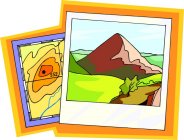
Worksheets and No Prep Teaching Resources
Reading Comprehension Worksheets
Earth Science

Earth Science
 Worksheets and No Prep Teaching Resources Reading Comprehension Worksheets Earth Science |
 Earth Science |
| edHelper's suggested reading level: | grades 9 to 10 | |
| Flesch-Kincaid grade level: | 9.19 |
| Print Top O' the Land (font options, pick words for additional puzzles, and more) |
| Quickly print reading comprehension |
| Print a proofreading activity |
|
Top O' the Land
By Trista L. Pollard |

|
 1 If the surface of our planet was mostly flat, do you think scientists would develop only one type of map? We'll never know because the Earth is not close to resembling a flat sphere. Add a few landforms and a few man-made structures and you get the reason cartographers have developed topographic maps. Scientists need models that not only display the shape and size of a landform, but also display the elevation of a landform or structure. Topography focuses on the sizes, shapes, and elevations of landforms within a specific area. Similar for other types of maps, cartographers use information compiled in field surveys and from aerial pictures to design topographic maps. Scientists developed these maps which show natural land forms (mountains, rivers, hills, etc.) and human-made land forms (buildings, dams, roads, etc.).
1 If the surface of our planet was mostly flat, do you think scientists would develop only one type of map? We'll never know because the Earth is not close to resembling a flat sphere. Add a few landforms and a few man-made structures and you get the reason cartographers have developed topographic maps. Scientists need models that not only display the shape and size of a landform, but also display the elevation of a landform or structure. Topography focuses on the sizes, shapes, and elevations of landforms within a specific area. Similar for other types of maps, cartographers use information compiled in field surveys and from aerial pictures to design topographic maps. Scientists developed these maps which show natural land forms (mountains, rivers, hills, etc.) and human-made land forms (buildings, dams, roads, etc.). |
Create Weekly Reading Books
Prepare for an entire week at once! |
| Leave your feedback on Top O' the Land (use this link if you found an error in the story) |
 |
Earth Science
|
 |
High School Reading Comprehensions and High School Reading Lessons
|